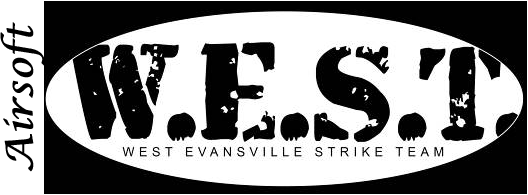|
Magazines discussed here are with regard to AEG rifles.
Magazines are made by various brands and with various capacities. Most magazines are specific to the style of rifle it is designed. There are hi-cap (high-capacity), mid-cap (middle-capacity) and low-cap (low-capacity) aka standard-cap mags. They are made with plastic shells or metal shells but most all have injection-molded plastic channels and chambers.
Low-cap -- magazine that holds approximately the same number of rounds in the magazine as the real firearm magazine holds bullets. They can be cheaper to come by than mid- and hi-caps but at the expense of changing out magazines more often. They have a single spring which applies constant pressure on a channel filled with bb's to push them towards the port leading to the gun. Some more hard-core MilSim players prefer low-caps to add to the realism.
Mid-cap -- magazine that typically holds 90 to 130 rounds and feeds like a standard-cap magazine. No winding and higher capacity than standard-caps make this type popular with experienced players. Mid-caps have an approximate capacity of 3x that of the capacity of the real gun's mag.
Hi-cap -- magazine that typically holds an excess of 160 rds. The magazine normally has a spring that is wound by hand which feeds the bb's in the magazine well into the port leading to the gun. As bb's are fed the spring unwinds. Some magazines come with electric motors that automatically feed the bb's -- autowinding magazines.
Loading magazines:
Low-caps & Mid-caps -- Speedloaders are better for loading these magazines because the bb's must be loaded through the same port they exit. An alternative method is using a tube and jamming rod. The tube and jamming rod may come with certain rifles. One end of the tube is put into the exit port of the magazine, then the tube is filled with bb's. The jamming rod is made to slide inside the tube and you force the bb's into the magazine by "jamming" the bb's into the magazine with the rod. Speed loaders work using a similar concept except instead of a long jamming rod, the rod is shorter and pushes between 1 and 4 bb's in the magazine at a time. With a rapid succession of movements a magazine can quickly be loaded in seconds. See diagrams below.
Hi-caps -- These magazines have a well or cavity for holding bb's. There is normally a small port or door that can be opened and allows one to pour in bb's until the magazine is full. If it is a manual-winding mag, fill the bb well then wind the magazine until the winding wheel becomes difficult to wind, and then fill the well up again to the top, as some bb's will now have been fed into the feeding channel.
Magazine Summary Notes:
Follow instructions and capacities listed by the magazine manufacturer. Forcing an extra bb or two in a magazine can weaken a spring or even cause a misfeed. But beware, magazines will not always hold the amount of bb's that it claims so load it carefully and if it becomes too difficult to load, stop, don't break your magazine or loader. Some magazines will be a little stiff to load at times. Regular lubrication of a magazine with a couple of shots of silicon oil will keep the bb's feeding smoother in and out. Use common sense. If a mag is supposed to hold 90 rounds but you've only loaded 30 before you meet resistance, then a little extra force to put the bb's in can sometimes get you past a stiff spot.
Low-caps and Mid-caps are more reliable as there are fewer moving parts. Box and drum magazines are other types of hi-cap magazines and usually hold a much larger capacity, 1000+ rounds. Support weapons are normally equipped with box magazines. Hi-caps are more popular with newer players as they can carry more ammunition in a single magazine and cheaper hi-caps don't cost too much. Some events prohibit the use of hi-cap magazines and using one in those cases is grounds for disciplinary action.
<< Pistols
Other Weapons >>
|

